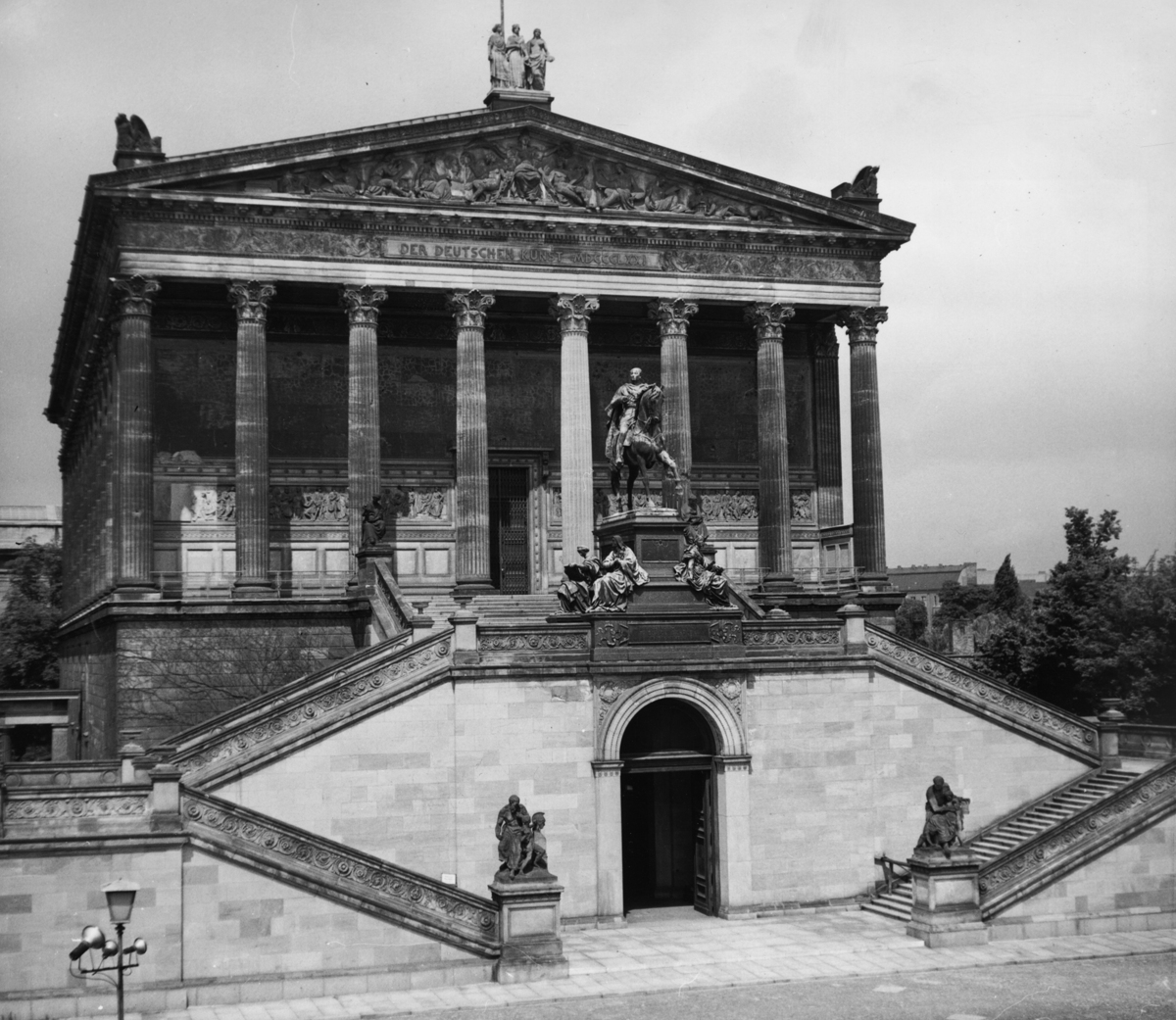Abstract
The date of the founding of the German Empire
[Reich], MDCCCLXXI (i.e., 1871), and
the words “To German Art” [“Der Deutschen Kunst”] are inscribed in the
pediment of the National Gallery in Berlin. In fact, this “temple” to a
unified German national art was conceived—and mostly built—before the
empire was founded, even though it was not dedicated until the birthday
of Kaiser Wilhelm I in March 1876. Built according to plans by Friedrich
August Stüler (1800–1865), who, in turn, worked from a sketch by
Prussian King Friedrich Wilhelm IV, the National Gallery was constructed
between 1865 and 1876. (Stüler was a student of another great architect
of Berlin’s classical city center, Karl Friedrich Schinkel.) The genesis
of the gallery’s collections also predated unification by a considerable
margin, having come from an 1861 bequest of 262 nineteenth-century
paintings, which the banker Consul Joachim Wagener had begun collecting
in 1815. Nevertheless, the intention behind the building of the National
Gallery—both before and after 1871 and shared by liberals and artists
alike—was to fulfill the state’s duty to display national art, to make
it accessible to the public, and to give commissions and recognition to
Germany’s greatest living artists. This was the mandate given to the
National Gallery’s first director, the art historian Max Jordan, who was
succeeded by Hugo von Tschudi in February 1896. Prussia’s clear
determination to take the lead in glorifying “German” art was signaled
in 1886 when an equestrian statue of Friedrich Wilhelm IV was erected at
the top of the double flight of steps leading to the museum’s entrance.
Today, this statue and the gallery itself constitute part of Berlin’s
famous “Museum Island.” The photograph below dates from 1974.
